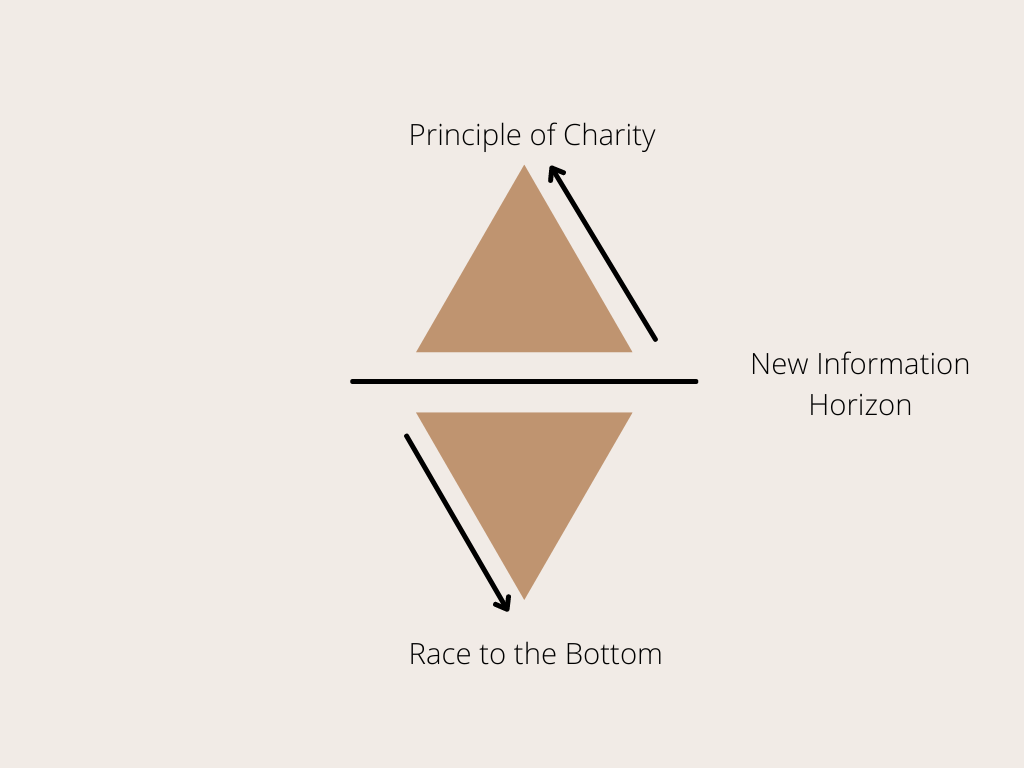📈 Avoid the Race to the Bottom
Use this simple graphic to integrate new information without overwhelm
Between stimulus and response there is a space. In that space is our power to choose our response. In our response lies our growth and our freedom.
—Viktor Frankl
Philosophers,
First, thank you to everyone who submitted suggestions for topics they’d like to see covered this year. I heard calls for another round of Game Theory/Bitcoin/DeFi which is very much in the works.
I heard suggestions for topics which we’ll cover in a podcast/conversation format later in the year, and other ideas that I’ll undoubtedly need experts to weigh in on.
But one request stuck out to me in particular: to study Viktor Frankl’s life and works. Early last year I read Frankl’s Man’s Search for Meaning, and I’ve shelved it, thinking about it in various ways since.
While I’d like to spend more time on Frankl as the year progresses, today I was inspired to make a simple graphic to represent a core idea that has lingered in my consciousness since first encountering Frankl.
Captured in the quote above, Frankl sincerely believes that regardless of circumstance, we all maintain a core agency to respond. He sees it as an immutable freedom that no person can take from another.
Keep in mind, that he developed this theory while imprisoned in a nazi concentration camp during WWII. This belief propelled him to survival, and then to a lifetime of helping others heal from trauma, pain, and loss.
But how does one integrate such an idea—noticing and leveraging the space between stimulus and response—into their daily lives?
It’s not unlike the Principle of Charity we’ve spoken about extensively here at TPP.
If you remember, the Principle of Charity demands that I understand the best possible version of an argument or of new information before I set to the task of arguing for or against it.
Inversely, what happens when we insist on integrating the lowest or worst possible version of argument or of new information? I call this the race to the bottom, and it’s how most of us are communicating with each other in 2022—it’s becoming the rule to human communication in every arena of life.
As you can see, the choice is given at the time of what Frankl calls, stimulus.
In this graphic, I refer to it as a horizon presented at the time of new information. It’s kind of like a black hole.
Keep reading with a 7-day free trial
Subscribe to The Pocket Philosopher to keep reading this post and get 7 days of free access to the full post archives.


